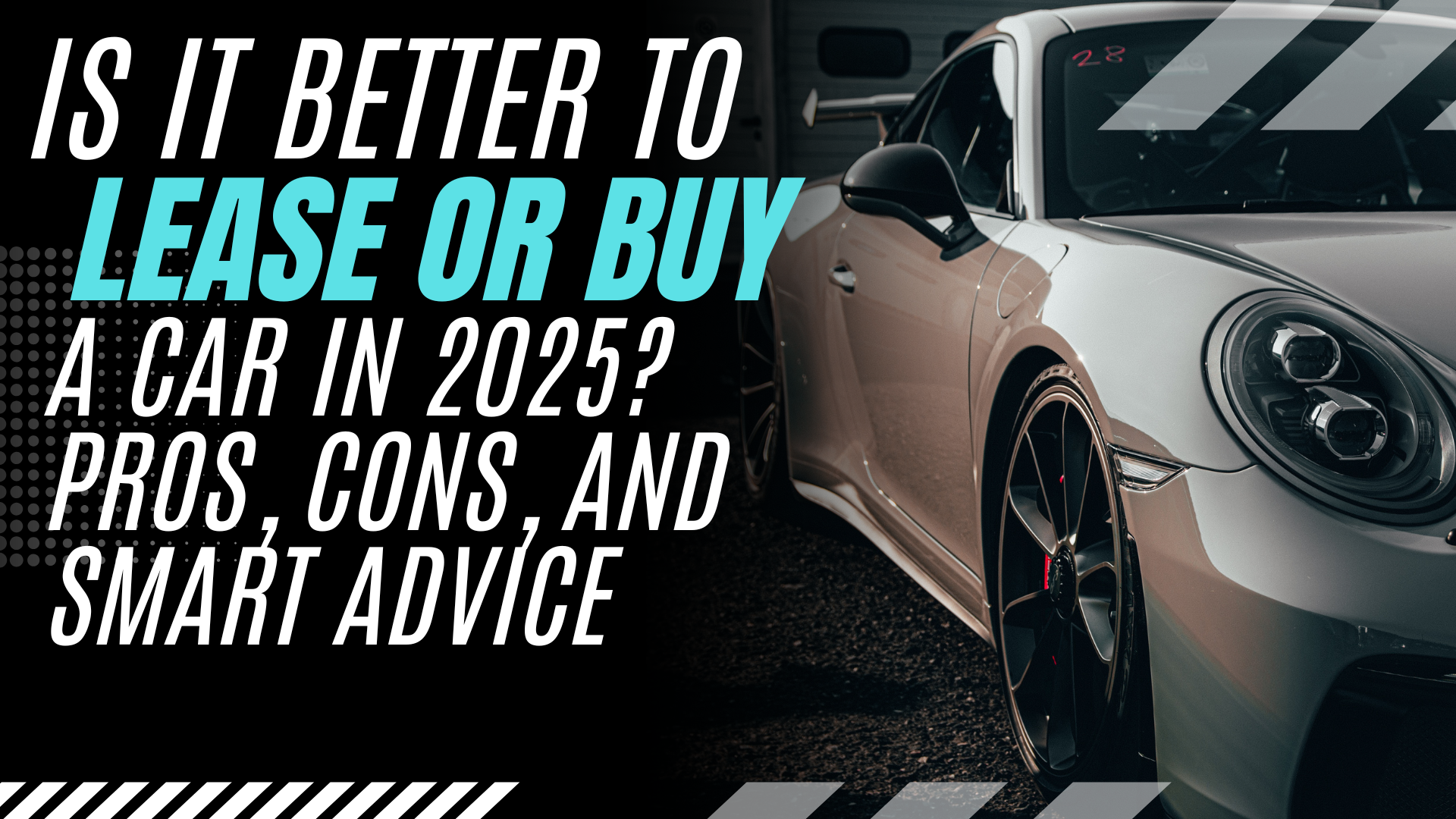Introduction: Lease or Buy? The 2025 Dilemma
In today’s rapidly evolving automotive market, the decision to lease or buy a car in 2025 isn’t as simple as it once was. With rising interest rates, advanced vehicle tech, and shifting ownership trends, both options have become more nuanced. Whether you’re eyeing a hybrid, electric vehicle, or traditional gas-powered car, understanding the benefits and drawbacks of leasing vs. buying is essential for making a smart financial move.
Let’s explore the real costs, advantages, and lifestyle implications of each option so you can drive off the lot with confidence.
1. Upfront Costs: Leasing is Lighter, Buying is Heavier
Leasing:
-
Usually requires lower down payments (sometimes none)
-
Includes the first month’s payment, a security deposit, and acquisition fees
-
Less initial financial burden
Buying:
-
Requires a larger down payment, typically 10%–20% of the car’s price
-
You’ll also pay registration fees, taxes, and loan origination fees
Takeaway: Leasing is more affordable upfront, making it attractive to those with limited cash flow.
2. Monthly Payments: Lower for Leasing, Higher for Buying
Leasing:
-
Monthly payments are often 20%–30% lower than loan payments
-
You’re only paying for the vehicle’s depreciation during the lease term
Buying:
-
Monthly payments are higher because you’re paying off the entire value of the car, plus interest
Takeaway: Leasing can ease monthly budgeting, but buying builds equity over time.
3. Long-Term Value: Ownership vs. Recurring Payments
Leasing:
-
You don’t own the vehicle, so there’s no resale value
-
When the lease ends, you must return the car or lease again
Buying:
-
Once the loan is paid off, you own the car outright
-
You can drive for years without monthly payments and eventually sell or trade the vehicle
Takeaway: Buying is better for long-term value; leasing keeps you in a payment cycle.
4. Mileage Limits: Leasing Comes with Restrictions
Leasing:
-
Common mileage caps: 10,000 to 15,000 miles per year
-
Exceeding the limit can cost $0.15 to $0.30 per extra mile
Buying:
-
Drive as much as you want with no penalties
Takeaway: If you have a long commute or love road trips, buying offers more freedom.
5. Maintenance and Repairs: Who Pays in 2025?
Leasing:
-
Most leased vehicles are under warranty during the entire term
-
Minimal repair costs but must maintain vehicle per lease terms
Buying:
-
You’re responsible for all maintenance and repairs after the warranty expires
-
Long-term ownership can mean higher repair bills
Takeaway: Leasing is hassle-free for repairs, but buying gives you flexibility to choose how and where to maintain your vehicle.
6. Customization: Limited vs. Limitless
Leasing:
-
Customizing a leased vehicle is not allowed
-
Any changes may result in penalties at lease-end
Buying:
-
You can modify the vehicle however you like—wheels, sound systems, paint jobs, etc.
Takeaway: Want to make your car truly yours? Buying is the way to go.
7. Emerging Trends in 2025: EVs and Tech-Driven Shifts
Electric Vehicles (EVs):
-
Depreciate faster, making leasing more appealing in some cases
-
Tax incentives for buying may not apply to leased vehicles unless passed on by the dealer
Technology Upgrades:
-
Cars are becoming obsolete faster due to tech advancements (ADAS, connectivity)
-
Leasing lets you upgrade every few years to stay current
Takeaway: Leasing EVs may help avoid rapid depreciation, while buying offers long-term value and ownership of incentives.
8. Total Cost of Ownership: The Big Picture
Let’s compare a 2025 scenario using an average new vehicle costing $40,000:
| Factor | Leasing (3 years) | Buying (6 years) |
|---|---|---|
| Down Payment | $2,000 | $8,000 |
| Monthly Payment | $450 | $700 |
| Total Paid Over Term | ~$18,200 | ~$50,400 |
| Resale Value (Buying) | N/A | ~$20,000 after 6 years |
| Final Ownership | No | Yes |
Takeaway: Buying is more expensive upfront, but you own a valuable asset. Leasing is easier on short-term budgets but may cost more over time if you lease repeatedly.
9. Which Option Fits Your Lifestyle?
| If You Should Lease: |
|---|
| You want a new car every few years |
| You drive under 15,000 miles annually |
| You prefer lower monthly payments |
| You don’t plan to modify your vehicle |
| You like warranty-covered repairs |
| If You Should Buy: |
|---|
| You drive a lot or for long distances |
| You plan to keep the car for 5+ years |
| You want freedom to customize |
| You’re looking to build equity |
| You want long-term cost savings |
Conclusion: Choose Based on Your Needs, Not Trends
In 2025, the choice to lease or buy a car is more personalized than ever. The best option depends on your financial situation, driving habits, and long-term goals. Leasing offers flexibility and lower costs upfront, while buying delivers long-term value and full control of your vehicle.
Before deciding, run the numbers, compare offers, and consider how your lifestyle might evolve in the next few years. A smart decision today can save you thousands down the road—and ensure you get the most out of your new ride.
